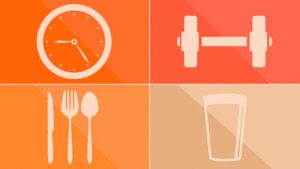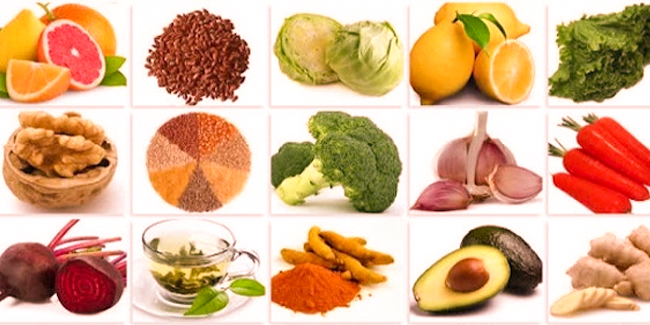
- March 22, 2019
9 Habits that Help Control the Disease on a Daily Basis
9 Habits that Help Control the Disease on a Daily Basis
Those who have diabetes should keep an eye: if blood glucose levels rise above the expected level, there is a risk of various damage to the body, such as kidney complications, eye damage, and skin problems. The disease occurs precisely because of increased blood sugar, which occurs because the pancreas can not produce the hormone insulin enough for the body to function properly or because insulin is resistant to proper action.
Inserting some simple habits into everyday life is important to get along with diabetes. Here’s what you can do to help conventional treatments control glucose and stay always healthy.
Control Weight
Those who have diabetes and are overweight should ideally seek out a nutritionist to make a proper diet and eliminate the extra pounds. According to endocrinologist Renato Zilli of the Hospital Sírio Libanês, the benefit is in losing abdominal fat, since it is one of the responsibilities for the onset of diabetes and also requires a lot of insulin release.
“When you lose weight, more insulin is left to other parts of the body, requiring less demand for the hormone,” he explains. This is very beneficial for controlling diabetes.
Do Physical Activities
As a rule, all people should have regular physical activity. However, those who have diabetes should follow this recommendation even more closely. Zilli explains that exercising decreases risk or even manages to control diabetes. “It will decrease insulin resistance in the peripheral muscles. With physical activity, the person uses the blood sugar better,” he explains.
In addition, tinkering with the body will rule out the risk of heart attack or stroke, which is naturally increased among patients with diabetes. It is important to talk to the doctor for guidance on the best physical activities for each case.
Moisturize Skin Well
Uncontrolled glycemia can also lead to dry skin that, if left uncared for and very well hydrated, can develop itching and cracking that increases the chance of infection. Dermatologist Cláudio Wulkan, of Israelita Hospital Albert Einstein, clarifies that dry skin shows up following one to three weeks of uncontrolled glycemia. “You need to hydrate your skin well and control your blood sugar.”Opportunistic microorganisms also attack when the skin is dry: “With the uncontrolled sugar, infections may appear, because the defense cells in our blood have their mobility altered. They work slowly in a high-sugar environment,” explains Wulkan. When these defenses are compromised, the skin is vulnerable to attacks of bacteria and fungi. The hydration of the skin, therefore, makes a lot of difference to avoid irritations and injuries. Skin care includes the use of specific products for people with diabetes. Moisturizing creams specially designed for this audience can be used daily. For a more efficient absorption, the idea is to make use of the moisturizer soon after the bath.
Take Care of Your Feet
The skin of the feet is the one that most suffers from the carelessness of controlling the disease. The dermatologist explains that the region is more susceptible to attacks of fungi or bacteria because the vascularization is compromised and the body’s defense cells do not reach the site. In addition, diabetes causes micro-lesions in vessels and nerves that can, indirectly, change the sensitivity of the feet.
“This altered sensitivity can cause wounds, injuries, and ulcers,” warns Wulkan, who is also a member of the Brazilian Society of Dermatology and the American Society of Dermatology.
“You can get hurt more because you do not feel the pain. If you step on a pebble, for example, you will not feel it and it will hurt your skin,” he explains. The recommendation is always to assess the sensitivity of the feet in medical appointments.
In addition, also in this region of the body, the dryness of the skin appears with more intensity. The use of skin moisturizers for those who have diabetes can help control the damage caused by excessive dryness.
It is important to remember that the hydrant cream should not contain alcohol since this component can impair the hydration of the skin.
Eat Fibers
Eating healthy and rich in vegetables is ideal for those who have diabetes because they contain fiber, recommends the endocrinologist. The fibers help to slow the rate of absorption of glucose in the blood.
“Foods rich in fiber also give satiety, making the person eat less,” clarifies the endocrinologist.
Sleep Well
It sounds silly, but a good night’s sleep is allied to those who have diabetes. Renato Zilli explains that sleeping less than seven hours a night worsens sugar control because the body produces more cortisol, a hormone that, in excess, is not welcome since it increases the accumulation of abdominal fat.
“In addition, lack of sleep causes more binge eating, so it is very important that the person sleeps well.” The endocrinologist still points out that our will power is spent during the day, so the chance to eat nonsense increases. “It is important then that we start the day with more disposition and for that, it is essential to sleep well.”
Do not Stress
The body releases cortisol in the face of stress, which is bad for people with diabetes. “In addition, stress can make a person stop making healthy choices and have a worsening sleep quality,” says Zilli.
Avoid Simple Carbohydrates
White flour, sugar, and other simple carbohydrates quickly turn into glucose, so they are not good choices for people with diabetes.
“Today, we have a very large caloric offer, so the idea is to make healthier choices and to schedule meals,” says the endocrinologist at the Sírio Libanês Hospital.
Stay away from Alcohol
According to Zilli, those who have diabetes should be very careful about alcoholic beverages. “They can lead to blood glucose both down [hypoglycemia] and up [hyperglycemia]. The best alcoholic drink for people with diabetes is dry red wine, but you can not drink it at will,” he says, asking for caution.
“Only the doctor will be able to tell how much the person can consume,” explains the specialist.

















